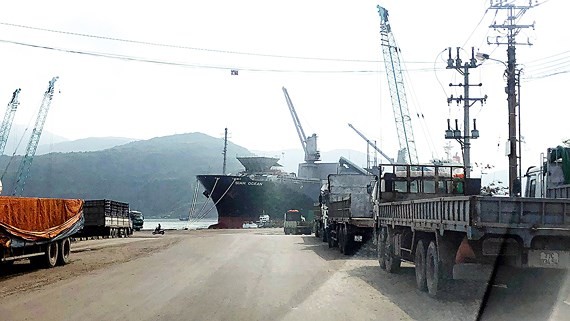
The port plays strategic role in economics and military relating to national defense and security. It receives the largest volume of goods among seaports in the central key economic zone, contributing in boosting socioeconomic development in the central region and the Central Highlands.
At a working session with Prime Minister Nguyen Xuan Phuc on January 20, secretary of Binh Dinh province Party Committee Nguyen Thanh Tung proposed the PM to consider taking back the port or holding back 75 percent its share.
Inspection over the port equtization is being conducted by the Government Inspectorate and the Central Inspection Commission of the Communist Party of Vietnam, the PM said that the Government will consider equitization at Quy Nhon port after the Government Inspectorate has conclusion about the matter and will have better management method for its development.
Quy Nhon seaport was established in 1976, managed by the seaway department under the Ministry of Transport.
In 1993, the ministry decided to set up Quy Nhon seaport state own enterprise. The port was directly under Vietnam National Shipping Lines (Vinalines) and renamed Quy Nhon Port Holding Limited Liability Company (QNP).
Vinalines restructuring project in the phase of 2012-2015, as per Decision 276 signed by deputy Prime Minister Vu Van Ninh on behalf of the PM and Decision 37 by the PM, specifies that Vinalines represents state own capital at QNP and must hold 75 percent dominant shares.
In September 2013, QNP auctioned 10 percent of its chartered capital equivalent to 4.03 million shares to free shareholders and sold 4.04 million shares to strategic investor who is Hanoi based Hop Thanh Company.
In June 2015 Vinalines continued selling 10.5 million share to Hop Thanh Company. The remaining part of 19.8 million shares were sold to the company in September in the same year.
After three share transfers, 86.23 percent of Quy Nhon port shares worth VND440 billion ($19.4 million) fell into the hands of Hop Thanh Company. Hence, Vinalines have broken regulations at Decisions 276 and 37.
Talking to Sai Gon Giai Phong Newspaper, Mr. To Tu Thanh, secretary of the provincial Party Committee in the term of 1996-2001, wondered why the port was sold as cheap as only VND404 billion and who would be held responsible for that.
According to Mr. Thanh, the port equitization and sale were conducted through Documents No. 1115 in 2013 and 628 in 2014 which Binh Dinh province People’s Committee had sent to the Ministry of Transport.
The two documents proposed that Quy Nhon port should be equitized and the state should hold only 49 percent shares, which would be sold to strategic investors afterwards.
The policy of equitizing Quy Nhon port is right but implementation does not accord with regulations. Mr. Tu says that it is very difficult to take back the port and the best way is to apply the Government’s Decree stipulating that the state must hold 75 percent dominant share.
In July 2015, former secretary of Binh Dinh province Party Committee Nguyen Van Thien Ly in the term of 2010-2015, sent another document to the ministry and the Prime Minister, agreeing with equitization to create capital source for the port upgrading and expansion and proposing to speed up the equitization process.
Explaining the move, Mr. Ly said that the document was signed in the spirit that the port will have appropriate infrastructures and solve overloading pressure. The proposal was to boost infrastructure development not equitization because the port belongs to the Ministry of Transport not the province so the province could not attend in equitization.
Previously on May 14, 2014, QNP sent document 297 to Vinalines and the Ministry of Transport, proposing to maintain the state’s participation in the company’s management because it is necessary.
Before equitization, Quy Nhon seaport had the system of 20,960 warehouses, 48,000 square meters of container yards and six quays. Quay No.6 could receive vessels of 50,000 tons.
Besides the headquarters, the port also owns 300,000 square meters of land inner Quy Nhon city, Binh Dinh province.
























